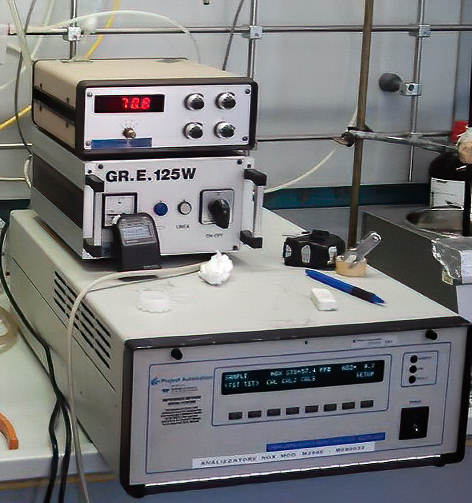Research topics:
Advanced Materials -Chemistry for Cultural Heritage – Green Chemistry
Keywords:
Photoactive nanomaterials, UV light, Solar light, Water remediation, Air remediation, Self-cleaning coating, Water and surface disinfection, Cultural heritage protection
Contact person:
Other info:
The research activities carried out in this laboratory are mainly devoted to:
– Design and synthesis of UV or Vis-light active inorganic nano-catalysts:
- TiO2-based nanomaterials
- Plasmonic nanoparticles
- Multifuncional heterostructures
– Investigation of photocatalytic properties of (nano)materials:
- Set up of experimental protocols to investigate and compare the photocatalytic activity of new (nano)materials,
- Test of the UV induced photocatalytic activity in water of powdery (nano)catalysts according to ISO standards
- Test of the UV or Solar light induced photocatalytic activity in water of (nano)catalyst immobilized onto different surfaces
- Target molecules in water: dyes, pesticides, pharmaceuticals
- Test of photocatalytic activity at solid/gas interface: NOx removal
- Test of the antimicrobial activity of photoactive nanomaterials
– Immobilization of nanoparticles on unconventional substrates
- Preparation of formulations containing TiO2 NPs for deposition by casting, dip-coating, spray coating, impregnation, etc.
- Engineering NP surface chemistry and formulation composition according to chemical composition and geometry of the substrates (fabric, paper, stone, concrete, steel, glass, alumina fiber, etc)
- TiO2 NPs can be immobilized on buildings materials or embedded in concrete to produce photocatalytic cements
- Possibility to infer hydrophobic and/or self-cleaning coating. Preventing surfaces from water absorption. Aesthetic of the material is not affected by the coating
- Integration of nanocatalysts in photocatalytic devices.
LIST OF AVAILABLE INSTRUMENTATION

Chemiluminescence NO/NO2/NOx analyzer in ambient air with the following characteristics:
– Certification of conformity to EN 14211:2012
– Certification of conformity to EN 15267:2009 – Part 1 and Part 2
– User selectable measuring ranges for each full scale from 50 ppb to 20 ppm
– Independent measuring ranges for programmable NO, NO2, NOx and auto-ranging
– Limit of detection: 0,4 ppb
– Zero drift: <0,5 ppb/24 hours
– Span drift: <0.5% of full scale/24 hours
– Linearity: 1% of full scale
– Optimisation of response time through adaptive signal filtering
